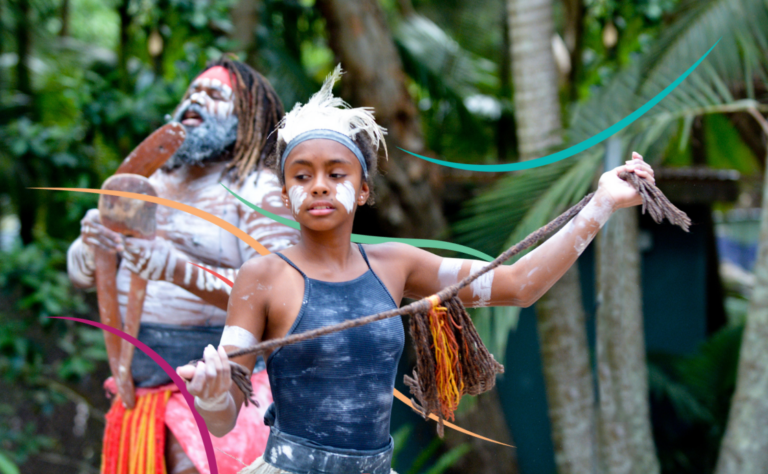The Baha’i Faith, with its profound commitment to the oneness of humanity and the universality of religious truth, offers intriguing insights into diverse cultural narratives. Among these are the spiritual teachings and traditions of the Aboriginal people of Australia, who have long viewed their relationship with the divine through a unique lens. In this exploration of the Aboriginal Divine Messengers from a Baha’i perspective, we delve into the intersection of these two spiritual realms, unraveling the threads that bind them together in a tapestry of profound significance.
At the core of the Baha’i teachings is the belief that God has sent Messengers throughout history to guide humanity. These Messengers, among whom are figures such as Moses, Muhammad, and Baha’u’llah, have provided revelations, each suited to the needs of their time. In considering Aboriginal spirituality, it becomes evident that the connection between the sacred and the terrestrial emerges vividly within their narratives, which invoke a cyclical understanding of existence rather than a linear one.
Aboriginal Australians perceive the world through a lens informed by deep ancestral ties, resonating with the concept of the “Dreamtime.” This mythical temporal realm emphasizes creation, where the ancestors shaped the land, laws, and social structures. The interconnectedness of the environment and the spiritual realm is anchored in their understanding of the Divine. From a Baha’i standpoint, this intrinsic link parallels the concept of unity—the idea that all existence is interwoven, forming a cohesive whole that manifests the divine will.
The Aboriginal Divine Messengers, such as the spiritual leaders and elders, serve as conduits of wisdom. They are seen as guardians of ancient knowledge, entrusted with the responsibility of passing down teachings that resonate from generation to generation. In the Baha’i view, these leaders function similarly to the divine Messengers, guiding their communities through moral and ethical dilemmas, instilling principles that uphold human dignity and interconnectedness.
In light of this, we can draw an intriguing metaphor between the Aboriginal perspective on divine messengers and the foundational principles of the Baha’i Faith. Just as the Aboriginal prophets wear the mantle of authority granted by their community’s ancestral lineage, Baha’is believe in a continuous line of guidance from God through a succession of Messengers whose teachings transcend cultural boundaries. The Baha’i emphasis on progressive revelation suggests that truth unfolds progressively, manifesting through cultures, dialects, and customs. Thus, Aboriginal teachings enrich this revelation tapestry, offering alternative yet complementary pathways to understanding divine intent.
Additionally, it is essential to acknowledge the role of language in conveying profound truths. The rich poetic quality of Aboriginal languages encapsulates complex ideas about spirituality and connection to the land. Metaphors within these languages act as gateways, illuminating hidden truths that resonate on deep emotional and spiritual levels. They speak of the “Country” as more than a geographical entity; it embodies the ancestral spirits and the essence of life itself. Such concepts resonate with the Baha’i teachings, which advocate for stewardship over the Earth and propose that humanity operates as custodians of a planet imbued with sanctity.
Moreover, the Aboriginal understanding of time is harmoniously attuned to the Baha’i principle of the cyclical unfolding of divine purpose. The Dreamtime does not merely refer to an era of creation but also echoes through present realities, emphasizing that past, present, and future converge in an eternal present. This perspective challenges the linearity often perceived in Western thought, aligning instead with Baha’i ideals where the progression of history is viewed as an ongoing journey toward unity and enlightenment.
As we traverse the philosophical terrain shared by Aboriginal spirituality and Baha’i teachings, it is starkly clear that both advocate for social cohesion and ethical rectitude. The Aboriginal understanding of kinship, articulated through concepts of “Country” and “Connection,” emphasizes responsibility towards one another and the Earth. This mirrors the Baha’i assertion that humanity is one family, requiring individuals to act with love and compassion toward all beings. Such kinship nurtures a collective responsibility to safeguard the harmony of societal fabric, aligning closely with Baha’i principles of equality and justice.
In an era where cultural understandings are increasingly compartmentalized, the synthesis drawn from Baha’i perspectives on Aboriginal traditions presents an opportunity for enriching dialogue. Both communities exemplify how spiritual teachings can inform moral frameworks, nurture respect among diverse cultures, and unify humanity toward a common goal—the establishment of global peace and justice.
Moreover, the recognition of Aboriginal Divine Messengers within the Baha’i context underscores the importance of inclusivity and respect for traditional wisdom. Acknowledging the depth and validity of these teachings emphasizes the paradigm shift necessary for a truly united global community. When Baha’is honor the sacred narratives of Aboriginal peoples, they further their commitment to the oneness of humanity, recognizing that divine truth permeates all cultures.
In conclusion, the intersection of Baha’i teachings and Aboriginal Divine Messengers cultivates a rich landscape of spiritual understanding. The complex interplay between these two frameworks beckons individuals to engage in reverent dialogue, fostering appreciation for the myriad ways in which the divine can manifest across cultures. As followers of the Baha’i Faith embrace these insights, they continue to pave the way toward a holistic view of spirituality—one where the threads of diverse teachings weave seamlessly into a single tapestry of unity, compassion, and shared purpose.
